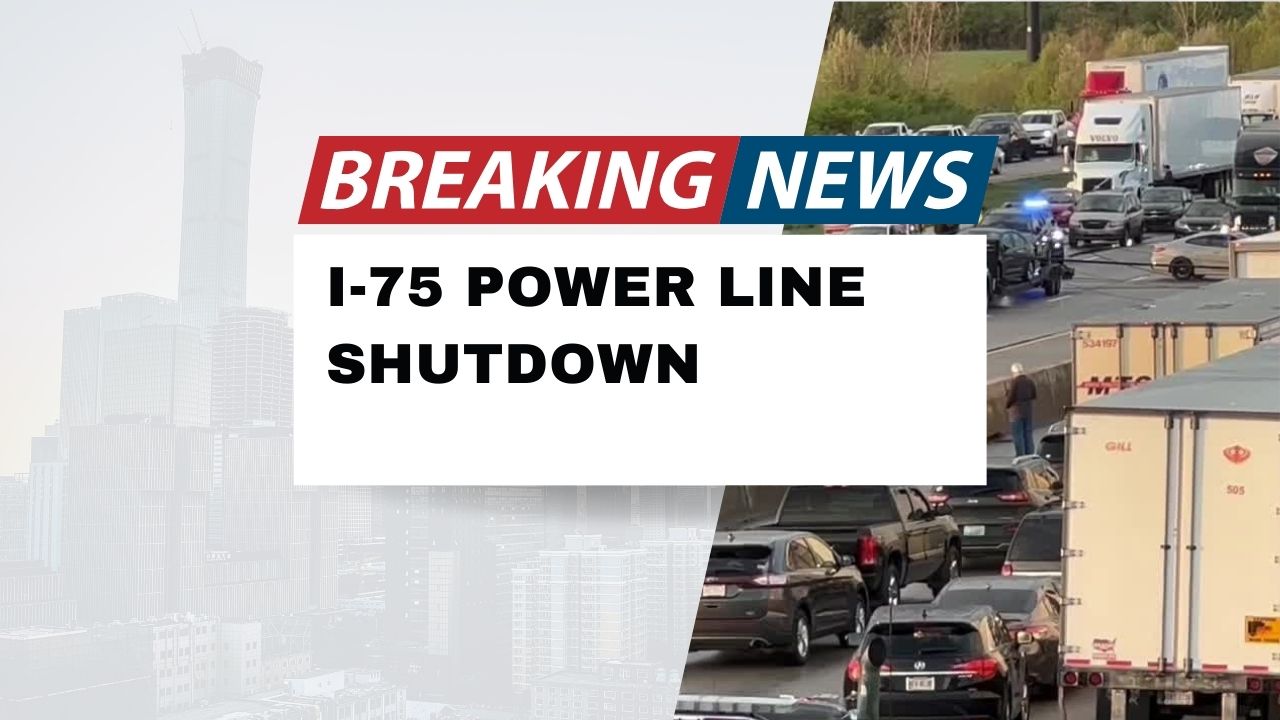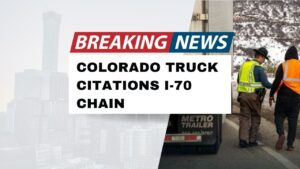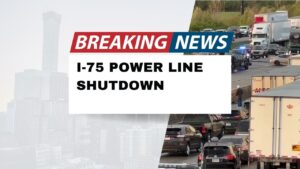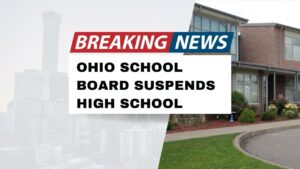It was a normal day on I-75. Cars were moving. People were rushing home. Then suddenly, everything stopped. A storm rolled in, and power lines came crashing down across the highway.
Police had no choice—they shut it all down. Dayton Daily News reported that traffic was frozen in both directions. Drivers waited. Some worried. Some grew frustrated.
The truth is, downed lines are not just wires on the road. They carry danger. They can shock, even kill. And while crews worked, homes and shops nearby also lost power.
This is why it matters. It’s not just about cars stuck on the road. It’s about safety, community, and how quickly life can change. In the next part, I’ll walk you through why this happens, what it means for drivers, and what we should all keep in mind
| Cathegory | Definition |
|---|---|
| Highway Affected | Interstate 75 (I-75), a key north–south route between Michigan and Florida (espressocoder.com, RM – Read what you wants) |
| Major Recent Incident | June 18, 2025 – Downed high-tension three-phase power line south of Vandalia, Ohio; both I-75 directions closed (daytondailynews.com) |
| Shutdown Length (Vandalia) | Approximately 3 hours (closed at roughly 6:58 p.m., reopen by 10 p.m.) (daytondailynews.com) |
| Previous Incident (Lightning Strike) April 2, 2024 – Lightning knocked down lines near Monroe, Ohio; both directions shut down for several hours (WCPO 9 Cincinnati, WHIO TV 7 and WHIO Radio) | |
| Number of Poles Involved | Six power poles toppled in a severe-weather shutdown and took transmission and distribution lines with them across the road (RM – Read what you wants) |
| Consequences of Power Cut | Around 700 homes and a hotel went without power in that shut-down (RM – Read what you wants) |
| Safety Distance to Be Kept | Get at least 30 feet away from dropped power lines in order to avoid the hazard of electrocution (RM – Read what you wants)2 |
| Average Length of National Power Outage | Avg. duration of power disruption per U.S. customer in 2022: ~5.5 hours (U.S. Energy Information Administration)6 |
| Outage Trend (2014–2023) | On average per decade in 10 years, U.S. counties had roughly 999 power outages per decade, roughly one per week, affecting more than 540,000 customers per county (arXiv) |
What Does the I-75 Power Line Shutdown Mean?
Picture this. You’re driving. Music on. Traffic is moving fine. Then the brake lights ahead flash red. Suddenly, the road is blocked. Not by cars. Not by debris. But by heavy power lines lying across the lanes.
That’s what the I-75 power line shutdown means. Officials close the highway because live wires on the ground are too dangerous. You can’t drive past them. You can’t touch them. Even standing too close can be risky. Electricity moves fast. It jumps. It burns. It can kill.
This is why safety comes first. Protecting drivers, passengers, and even emergency crews is the top priority. So, the highway stays shut until the wires are cleared and the danger is gone.
What Causes an I-75 Power Line Shutdown?
Severe Weather
Storm clouds build. The wind howls. Lightning strikes. In just a few seconds, poles snap, wires fall, and lanes are covered in sparks and debris. Severe weather—like thunderstorms, high winds, or ice—remains one of the biggest reasons highways face these shutdowns.
Vehicle Accidents
Sometimes it’s not the weather. It’s people. A truck slides. A car spins out. A vehicle slams into a utility pole. The pole cracks, and wires drop across I-75. In minutes, a normal commute turns into a dangerous scene.
Infrastructure Failures
Not every cause is dramatic. Some poles are old. Some wires are worn down. When the infrastructure ages, it takes only a small push—like heavy rain or strong wind—for it to fail. And when it fails, the road pays the price.
How Does the Shutdown Affect Traffic and Communities?
Traffic Disruptions
Highways like I-75 carry thousands of vehicles every day. A shutdown means backups stretching for miles. People late for work. Families stuck in their cars. Long detours through side roads. One single break in the system creates hours of delay.
Safety Hazards
It’s not just traffic. The danger is real. Live wires on asphalt are like traps. Drivers who don’t notice could swerve. Cars could crash. Emergency workers walking nearby face the same risks. Every second counts, and every mistake can be costly.
Power Outages
When lines fall, it’s not only drivers who feel it. Homes lose power. Shops go dark. Restaurants shut their doors. For many, the shutdown on the highway also means disruption in daily life off the road.
What Should Drivers Do During a Shutdown?
The rules are simple. But they can save lives.
- Stay inside your vehicle. It’s safer than stepping out near live wires.
- Don’t touch metal parts. Car doors, handles, even the roof—electricity can move through them.
- Call emergency services. Report the danger. Let the crews know.
- Follow detours. Police and road officials put them there for a reason. Don’t try to get around barriers.
Waiting is frustrating, yes. But safety is more important than speed.
How Do Authorities Respond?
When the wires fall, the clock starts ticking.
Police arrive first. Sirens cut through the air. They block the road. Flashing lights warn drivers to stop. No one goes past the barriers.
Then the emergency crews step in. Firefighters, troopers, and local responders secure the area. They make sure no one gets close to the danger.
Next, the utility teams take over. They shut down the power. They cut the current flowing through the fallen lines. Only then do they begin clearing the mess—lifting, removing, and hauling the heavy wires out of the way.
The timeline matters. Sometimes it’s a few hours. Like the Vandalia shutdown, where traffic finally moved again by late evening. Other times it takes longer, especially if poles need replacement or storms keep raging.
But one thing is clear. The road doesn’t reopen until every wire is gone, every pole checked, and every hazard cleared.
Lessons from Past Shutdowns
History tells the story.
In Vandalia, Ohio, storms dropped a three-phase power line across I-75. Cars stopped. Drivers waited for hours. But crews worked fast, and by nightfall, the road was safe again.
In Monroe, Ohio, lightning struck. Poles snapped. Debris covered the interstate. The shutdown lasted for hours, but again, teamwork between police and utility workers kept everyone safe.
These examples show something important. Preparedness matters. Quick response matters even more. The faster the crews arrive, the shorter the danger lasts. And when systems are in place—detours, alerts, clear communication—damage is minimized, and life returns to normal sooner.
Can Shutdowns Be Prevented?
Maybe not always. But yes, they can be reduced.
Better infrastructure is the first step. Stronger poles. Newer wires. Regular maintenance before storms tear things down.
Technology helps too. Smart grid monitoring can detect weak points faster. Quicker outage detection means crews arrive before things get worse.
And then there’s design. Weather-resistant poles. Stronger foundations. Even underground lines in high-risk areas. These changes cost money, but they save lives, time, and frustration.
Prevention is not perfect. Storms will always surprise us. Accidents will always happen. But with the right steps, the shutdowns can be fewer, shorter, and safer.
Conclusion : I-75 Power Line Shutdown
The I-75 power line shutdown isn’t just traffic stuck on a road. It’s bigger. A storm hits, or a truck slides, and in seconds the highway turns silent.
Cars frozen. Lights flashing. People waiting with no clue when it ends. The outcome is always messy—delays, power gone, danger close. Crews rush in. Police block lanes.
Utility workers cut the wires. Slowly, life moves again. But the lesson stays. Safety must win over speed. Quick response keeps lives safe.
Stronger poles, smarter systems, maybe even underground lines—these are not fancy ideas, they are reasons why next time could be better.
The truth is simple. One moment changes everything. And when wires fall, we see just how fragile our routine really is.







